The what, when, why, and where of telling someone
they are doing something wrong.
A friend and fellow Catholic asked me the following the other day.
“Fraternal correction… Summa says its a matter of precept and a spiritual work of Mercy.. Augustine further states that if we FAIL to correct the sinner then we become worse than the sinner…
So, how do we personally judge whether it is perceptual to fraternally correct, or best to stay silent…”
————————
To answer his question, I looked over St. Thomas’ Summa Theologiae, and Augustine’s City of God, the wrote the following response. Saint Thomas harmonizes with Augustine, actually treating Augustine’s doctrine in his own article on fraternal correction.
Thomas essentially fleshes out Augustine’s thought line developed in Augustine’s City of God, saying that fraternal correction is a precept – an ordinance or command. However, the gravity of the matter, and the time and circumstance, and possible adverse reaction, may impact where, how, and when you correct someone else.
Thomas, by stating that fraternal correction is a Divine precept, only reenforces Augustine’s teaching, and simply augmented it by showing how, if you correct someone at the wrong time, the wrong way, or for the wrong thing, you actual cause problems instead of solving them.
In the Summa Theologiae, in the 2nd part of the 2nd part, Question 33, Answer 2, Thomas lays out several major objections and answers, but Objection 3 and its answer is the most important to my friend’s question.
Objection 3. Further, the omission of a Divine precept is a mortal sin, which has no place in a holy man. Yet holy and spiritual men are found to omit fraternal correction: since Augustine says (De Civ. Dei i, 9): “Not only those of low degree, but also those of high position, refrain from reproving others, moved by a guilty cupidity, not by the claims of charity.” therefore fraternal correction is not a matter of precept.
——————–
Reply to Objection 3. Fraternal correction may be omitted in three ways.
First, meritoriously, when out of charity one omits to correct someone. For Augustine says (De Civ. Dei i, 9): “If a man refrains from chiding and reproving wrongdoers, because he awaits a suitable time for so doing, or because he fears lest, if he does so, they may become worse, or hinder, oppress, or turn away from the faith, others who are weak and need to be instructed in a life of goodness and virtue, this does not seem to result from covetousness, but to be counselled by charity.”
Secondly, fraternal correction may be omitted in such a way that one commits a mortal sin, namely, “when” (as he says in the same passage) “one fears what people may think, or lest one may suffer grievous pain or death; provided, however, that the mind is so dominated by such things, that it gives them the preference to fraternal charity.” This would seem to be the case when a man reckons that he might probably withdraw some wrongdoer from sin, and yet omits to do so, through fear or covetousness.
Thirdly, such an omission is a venial sin, when through fear or covetousness, a man is loth to correct his brother’s faults, and yet not to such a degree, that if he saw clearly that he could withdraw him from sin, he would still forbear from so doing, through fear or covetousness, because in his own mind he prefers fraternal charity to these things. It is in this way that holy men sometimes omit to correct wrongdoers.
————————————————————
For my part, correction involves truth, charity, humility, and appropriateness. It is rare that a circumstance arises where you would not, at some point, correct someone you know is living, or believing, falsely. Keep the following in mind:
- God is Truth, and attesting to truth is attesting to Him, seeing the world as He does, not as mere men to. Try to know the person will understand what you are correcting is a matter of truth.
- Charity is love of neighbor for the love of God. You need to know your motivation for correction is sincerely for the betterment of the other person(s), and that reason only.
- You have to decrease, so that He might increase. Correct the person in as gentle a way as possible, seeking the right time and way in prayer, so that the person sees sincerity and meekness, not self-righteousness or self-importance.
Lastly, try to ascertain how knowledgeable they are about their false behavior or belief, so that you are genuinely raising a concern to someone that may not know their error. If they know they are in error, it becomes a matter of reenforcing correction, and dealing with a hardened heart. Bear in mind this applies to omission #1 above.Know who you are correcting. Some people may not hear anything but bluntness. Others need a soft glove. Let the Holy Spirit be your guide in correcting others, so as to be conformed to the Divine Will.
In Christ Who is Truth Itself,
Todd
{or would that be Papa Todd?}
Thank you for following Raising (& Teaching) Little Saints! Visit us again soon!














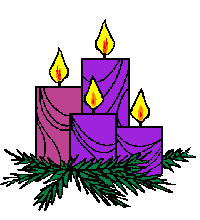



 O Sapientia (December 17) O Wisdom (Eccl 24: 5), you came forth from the mouth of the Most High (Sir 24: 30), and reaching from beginning to end, you ordered all things mightily and sweetly (Wis 8: 1). Come, and teach us the way of prudence (Isa 40: 14).
O Sapientia (December 17) O Wisdom (Eccl 24: 5), you came forth from the mouth of the Most High (Sir 24: 30), and reaching from beginning to end, you ordered all things mightily and sweetly (Wis 8: 1). Come, and teach us the way of prudence (Isa 40: 14).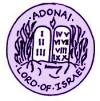 O Adonai (December 18) O Adonai or O Lord and Ruler(Exod 6: 13) and Ruler of the house of Israel (Matt 2: 6), you appeared to Moses in the fire of the burning bush (Exod 3: 2), and on Mount Sinai gave him your Law (Exod 20). Come, and with outstretched arm redeem us (Jer 32: 21).
O Adonai (December 18) O Adonai or O Lord and Ruler(Exod 6: 13) and Ruler of the house of Israel (Matt 2: 6), you appeared to Moses in the fire of the burning bush (Exod 3: 2), and on Mount Sinai gave him your Law (Exod 20). Come, and with outstretched arm redeem us (Jer 32: 21).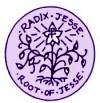 O Radix Jesse (December 19) O Root of Jesse, you stand for the ensign of all mankind (Isa 11: 10); before you kings shall keep silence and to you all nations shall have recourse (Isa 52: 15). Come, save us, and do not delay (Hab 2: 3).
O Radix Jesse (December 19) O Root of Jesse, you stand for the ensign of all mankind (Isa 11: 10); before you kings shall keep silence and to you all nations shall have recourse (Isa 52: 15). Come, save us, and do not delay (Hab 2: 3).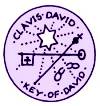 O Clavis David (December 20) O Key of David (Apoc 3: 7) Scepter of the house of Israel, you open and no man closes; you close and no man opens (Isa 22: 22). Come, and deliver him from the chains of prison who sits in darkness and in the shadow of death (Ps 107: 10).
O Clavis David (December 20) O Key of David (Apoc 3: 7) Scepter of the house of Israel, you open and no man closes; you close and no man opens (Isa 22: 22). Come, and deliver him from the chains of prison who sits in darkness and in the shadow of death (Ps 107: 10). O Oriens (December 21) O Rising Dawn (Zac 6: 12), Radiance of the Light eternal (Hab 3: 4) and Sun of Justice (Mal 3: 20); Come, enlighten those who sit in darkness & the shadow of death (Ps 107: 10; Lk 1: 78).
O Oriens (December 21) O Rising Dawn (Zac 6: 12), Radiance of the Light eternal (Hab 3: 4) and Sun of Justice (Mal 3: 20); Come, enlighten those who sit in darkness & the shadow of death (Ps 107: 10; Lk 1: 78). O Rex Gentium (December 22) O King of the Gentiles(Hag 2: 8), Desired of all, you are the cornerstone that binds two into one (Eph 2: 20). Come, and save poor man whom you fashion out of clay (Gen 2: 7).
O Rex Gentium (December 22) O King of the Gentiles(Hag 2: 8), Desired of all, you are the cornerstone that binds two into one (Eph 2: 20). Come, and save poor man whom you fashion out of clay (Gen 2: 7).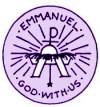 O Emmanuel (December 23) O Emmanuel (Isa 7: 14; 8: 8), our King and Lawgiver (Gen 49:10; cf. Ezek 21: 32), the Expected of the nations and their Savior (Isa 33: 22): Come, and save us, O Lord our God.
O Emmanuel (December 23) O Emmanuel (Isa 7: 14; 8: 8), our King and Lawgiver (Gen 49:10; cf. Ezek 21: 32), the Expected of the nations and their Savior (Isa 33: 22): Come, and save us, O Lord our God.






